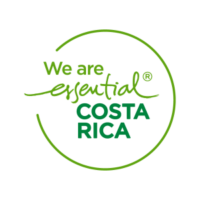Service 24/7/365
info@gypsycabnosara.com
Phone: + (506) 8302-1903
info@gypsycabnosara.com
- About
- Contact
- Publications
- LIR Airport – Nosara
- SJO Airport – Nosara
- Other Services
- My account
- Cart
- About
- Contact
- Publications
- LIR Airport – Nosara
- SJO Airport – Nosara
- Other Services
- My account
- Cart
Understanding the Annexation of Nicoya: A Local’s Perspective on Costa Rica’s Historical Milestone

- Introduction
- The Importance of the Annexation of Nicoya
- Why Understanding the Annexation Matters to Expats and Tourists
- The History of Nicoya Before Annexation
- Indigenous Chiefdoms and Early Settlements
- The Spanish Arrival and Its Impact
- The Annexation of Nicoya: A Turning Point
- The Political Climate Leading to Annexation
- The Decision to Join Costa Rica
- The Significance of July 25, 1824
- The Referendum and Its Outcome
- The Immediate Aftermath of the Annexation
- The Legacy of the Annexation
- How the Annexation Shaped Modern Costa Rica
- The Nicoyan Coat of Arms and Its Symbolism
- Celebrating the Annexation: Guanacaste Day
- The Importance of Guanacaste Day
- Traditional Celebrations and Activities
- The Annexation and Costa Rican Identity
- The Phrase “Part of Our Homeland by Our Own Will”
- The Guanacaste Tree as a National Symbol
- Life in Nicoya Today
- The Influence of History on Modern Nicoya
- Nicoya as a Blue Zone: Longevity and Lifestyle
- The Annexation’s Impact on Guanacaste Culture
- Traditional Foods and Crafts
- Bull Riding Festivals and Horse Parades
- Understanding Nicoya’s Unique Appeal
- Why Nicoya is a Must-Visit for Tourists and Expats
- Engaging with Local Culture and History
- Conclusion
- Reflecting on the Annexation of Nicoya
- The Lasting Legacy of July 25, 1824
Introduction
The Importance of the Annexation of Nicoya
Welcome, dear readers! Today, we’re diving deep into a significant event in our beloved Costa Rica’s history – the Annexation of Nicoya. As Ticos, we take immense pride in our rich history, and the Annexation of Nicoya is a cornerstone of our national identity. It’s a story of a community choosing their destiny, a tale that has shaped our country and continues to resonate today.
Why Understanding the Annexation Matters to Expats and Tourists
If you’re an expat living in Costa Rica or a tourist exploring our beautiful country, understanding the Annexation of Nicoya will give you a deeper insight into our culture, traditions, and values. It’s not just about the past; it’s about understanding the spirit of our people, our resilience, and our love for our homeland. So, let’s embark on this journey together, exploring the events that led to the Annexation, how we celebrate it today, and why it still matters.
The History of Nicoya Before Annexation
Indigenous Chiefdoms and Early Settlements
Before we delve into the Annexation itself, let’s take a step back in time. Nicoya wasn’t always a part of Costa Rica. In fact, it was the largest indigenous chiefdom encountered by the Spanish when they first arrived in northwestern Costa Rica in 1523. The indigenous people had their own unique culture, traditions, and political organization, which significantly contributed to the region’s rich cultural tapestry.
The Spanish Arrival and Its Impact
The arrival of the Spanish marked a significant turning point in Nicoya’s history. The Spanish brought with them new customs, traditions, and governance structures, which inevitably influenced the indigenous way of life. However, the indigenous people of Nicoya maintained many of their traditions, which continue to be a part of Nicoya’s unique cultural identity today.
The Annexation of Nicoya: A Turning Point
The Political Climate Leading to Annexation
Fast forward to the early 19th century, the political landscape in Central America was in flux. Nicaragua, our neighbor to the north, was embroiled in civil strife. Amidst this turmoil, the people of Nicoya found themselves at a crossroads, leading to a decision that would forever change the course of their history.
The Decision to Join Costa Rica
On July 25, 1824, the people of Nicoya made a monumental choice. They held a referendum and decided to annex themselves to Costa Rica. This decision wasn’t made lightly. It was a choice for stability and peace, a choice that has shaped the identity of Nicoya and Costa Rica as a whole.
The Significance of July 25, 1824
The Referendum and Its Outcome
July 25, 1824, is a date etched in the hearts of every Tico. On this day, the inhabitants of Nicoya, through a democratic referendum, chose to become part of Costa Rica. This decision was largely influenced by the civil war that was ravaging Nicaragua at the time. The people of Nicoya saw in Costa Rica a beacon of stability and peace, and they chose to align their future with ours.
The Immediate Aftermath of the Annexation
The annexation of Nicoya had immediate and far-reaching effects. It not only expanded the territory of Costa Rica but also enriched our nation with the unique cultural heritage of Nicoya. The decision made by the people of Nicoya on that fateful day has been honored and celebrated ever since as a testament to their wisdom and foresight.
The Legacy of the Annexation
How the Annexation Shaped Modern Costa Rica
The Annexation of Nicoya is more than just a historical event; it’s a defining moment that helped shape modern Costa Rica. The addition of Nicoya expanded our country’s territory, enriched our culture, and brought in a community that has contributed immensely to our national identity. The values of unity, choice, and democratic decision-making that the Annexation embodies are still held dear in Costa Rica today.
The Nicoyan Coat of Arms and Its Symbolism
The legacy of the Annexation is also proudly displayed in the Nicoyan coat of arms. The words “part of our homeland by our own will” honor the decision made by the people of Nicoya. The coat of arms also features the Guanacaste tree, our national tree. Its expansive heart-shaped branches symbolize protection and evergreen life, mirroring the enduring legacy of the Annexation.
Celebrating the Annexation: Guanacaste Day
The Importance of Guanacaste Day
Every year on July 25, we celebrate Guanacaste Day, a national holiday that commemorates the Annexation of Nicoya. This isn’t just a day off work; it’s a day of pride, reflection, and celebration. It’s a day when we honor the decision made by the people of Nicoya and celebrate the unity and strength of our country.
Traditional Celebrations and Activities
Guanacaste Day is celebrated with much fanfare across the country, but the festivities are especially vibrant in Nicoya and other parts of the Guanacaste province. The celebrations include a wide variety of cultural activities such as concerts, parades, folk dances, bull riding, and traditional food. One of the main attractions is the TOPE DE CABALLISTAS, a grand parade of horses from all parts of the country, accompanied by musical groups, making the event a very typical activity of Guanacaste.
The Annexation and Costa Rican Identity
The Phrase “Part of Our Homeland by Our Own Will”
The phrase “Part of our homeland by our own will,” inscribed on the Nicoyan coat of arms, is more than just a motto. It’s a powerful statement that encapsulates the spirit of the Annexation and the democratic values of our country. It’s a reminder of the choice made by the people of Nicoya, a choice that has become a defining part of our national identity.
The Guanacaste Tree as a National Symbol
The Guanacaste tree, featured in the Nicoyan coat of arms, is more than just a tree. It’s a national symbol that represents protection and evergreen life. Its expansive heart-shaped branches are a metaphor for the embracing and nurturing spirit of Costa Rica, a spirit that was embodied in the welcoming of Nicoya into our national fold.
Life in Nicoya Today
The Influence of History on Modern Nicoya
The history of the Annexation continues to shape life in Nicoya today. The pride in our past and the values that led to the Annexation are still evident in our community spirit, our celebrations, and our way of life. But Nicoya isn’t just about the past; it’s a vibrant, thriving community that continues to evolve while staying rooted in its rich history.
Nicoya as a Blue Zone: Longevity and Lifestyle
One of the unique aspects of Nicoya is its status as a Blue Zone, one of only five areas in the world where people live extraordinarily long and vibrant lives. Most inhabitants live to at least the age of 90, and many live more than 100 years. This isn’t just a testament to the healthy lifestyle and diet of the Nicoyans; it’s a reflection of the strong sense of community, the slower pace of life, and the positive outlook that are characteristic of Nicoya.
The Annexation’s Impact on Guanacaste Culture
Traditional Foods and Crafts
The Annexation of Nicoya has had a profound impact on Guanacaste’s culture, particularly its culinary and craft traditions. Corn-based gastronomic plates, a legacy of our pre-Columbian ancestors, are a staple in Guanacaste. From tamales to tortillas, these traditional dishes are a delicious testament to our rich cultural heritage. Similarly, our craft traditions, from pottery to weaving, reflect the artistic spirit of our ancestors and the natural beauty of our surroundings.
Bull Riding Festivals and Horse Parades
Guanacaste is also known for its vibrant festivals and activities. Bull riding festivals, horse parades, and other events are a big part of our cultural calendar. These events, filled with music, laughter, and camaraderie, are not just a source of entertainment; they’re a celebration of our history, our traditions, and our community spirit.
Understanding Nicoya’s Unique Appeal
Why Nicoya is a Must-Visit for Tourists and Expats
Nicoya is more than just a place; it’s an experience. From its rich history and cultural heritage to its vibrant community and stunning natural beauty, Nicoya has something for everyone. Whether you’re a history buff, a nature lover, or a foodie, Nicoya offers a unique and unforgettable experience. For expats living in Costa Rica, exploring Nicoya is a chance to deepen your understanding of our country and feel more connected to our community.
Engaging with Local Culture and History
One of the best ways to experience Nicoya is to engage with its culture and history. Attend a local festival, try traditional dishes, visit historical sites, or simply chat with the locals. Every interaction, every experience, is a chance to learn something new and gain a deeper appreciation of the spirit of Nicoya.
Conclusion
Reflecting on the Annexation of Nicoya
As we come to the end of our journey, it’s time to reflect on the Annexation of Nicoya and its significance. It’s not just a historical event; it’s a story of choice, of unity, and of community. It’s a story that has shaped our country and continues to resonate today. As Ticos, we carry the legacy of the Annexation in our hearts, in our traditions, and in our national identity.
The Lasting Legacy of July 25, 1824
July 25, 1824, is more than just a date; it’s a symbol of our democratic values and our national unity. Every year, as we celebrate Guanacaste Day, we honor the choice made by the people of Nicoya and reaffirm our commitment to the values that define us as a nation. The legacy of the Annexation is not just in our past; it’s in our present and our future. It’s in every Tico’s love for our country, in our respect for diversity, and in our commitment to democracy.
FAQs
What is the Annexation of Nicoya?
The Annexation of Nicoya refers to the historical event when the territory of Nicoya chose to become part of Costa Rica on July 25, 1824.
How is the Annexation of Nicoya celebrated in Costa Rica?
The Annexation of Nicoya is celebrated annually on Guanacaste Day with various cultural and civic events, including parades, music, food, and more.
Why is Nicoya known as a Blue Zone?
Nicoya is known as a Blue Zone because of the extraordinary longevity of its inhabitants. Many Nicoyans live to at least the age of 90, and the region has one of the highest numbers of centenarians in the world.
What are some traditional foods in Guanacaste?
Traditional foods in Guanacaste are often corn-based, a culinary tradition inherited from pre-Columbian ancestors. Examples include tamales and tortillas.
What are some traditional festivals in Guanacaste?
Guanacaste is known for its vibrant festivals such as bull riding festivals and horse parades.
Latest Publications
- Nosara vs. Jaco: Which Costa Rican Beach Town is Right for You?Introduction to Nosara and Jaco In the next publication, we will compare Nosara vs. Jaco, all its differences, and possible similarities, starting with a little… Read more: Nosara vs. Jaco: Which Costa Rican Beach Town is Right for You?
- Discover the Best Nosara Shuttle Service for Your Trip
 Discover the best shuttle services in Nosara with Gypsy Cab Nosara. Offering reliable, safe, and convenient transportation options from Liberia and San Jose, Gypsy Cab Nosara ensures a smooth travel experience. Book your shuttle today!
Discover the best shuttle services in Nosara with Gypsy Cab Nosara. Offering reliable, safe, and convenient transportation options from Liberia and San Jose, Gypsy Cab Nosara ensures a smooth travel experience. Book your shuttle today! - Gypsy Cab Nosara Shuttle Service to Bodhi Tree Yoga Resort: Comprehensive Hotel Review
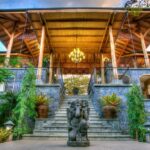 Explore Bodhi Tree Yoga Resort in Nosara with our comprehensive review. Learn about accommodations, wellness programs, dining options, and how Gypsy Cab Nosara can make your journey seamless with our shuttle service from Liberia Airport.
Explore Bodhi Tree Yoga Resort in Nosara with our comprehensive review. Learn about accommodations, wellness programs, dining options, and how Gypsy Cab Nosara can make your journey seamless with our shuttle service from Liberia Airport. - Comparing Playa Negra Vs Nosara: The Ultimate Guide to Costa Rica’s Hidden Gems
 Explore the ultimate guide comparing Playa Negra and Nosara, Costa Rica's hidden gems. Discover top activities, accommodations, dining, and travel tips to plan your perfect beach getaway with Gypsy Cab Nosara.
Explore the ultimate guide comparing Playa Negra and Nosara, Costa Rica's hidden gems. Discover top activities, accommodations, dining, and travel tips to plan your perfect beach getaway with Gypsy Cab Nosara. - Experience Luxury with Private Transport in Nosara
 Experience luxury and comfort with private transport services in Nosara. Discover the benefits, pricing, and safety measures of choosing Gypsy Cab Nosara for your travel needs.
Experience luxury and comfort with private transport services in Nosara. Discover the benefits, pricing, and safety measures of choosing Gypsy Cab Nosara for your travel needs. - Gypsy Shuttle Service to Blue Spirit: A Comprehensive Hotel Review
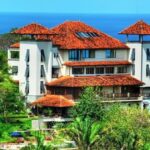 Explore the serene beauty of Nosara and the enriching retreat at Blue Spirit with Gypsy Cab Nosara. Our comprehensive review covers everything from amenities to travel tips, ensuring your journey is as seamless as it is memorable. Book your stress-free shuttle today!
Explore the serene beauty of Nosara and the enriching retreat at Blue Spirit with Gypsy Cab Nosara. Our comprehensive review covers everything from amenities to travel tips, ensuring your journey is as seamless as it is memorable. Book your stress-free shuttle today! - Nosara vs. Tamarindo: Your Ultimate Guide to Choosing the Perfect Costa Rican Destination – A Gypsy Cab Nosara Exclusive
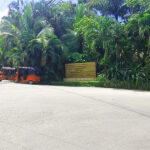 Embark on a picturesque journey to Nosara and Tamarindo with Gypsy Cab Nosara. Discover the tranquil beaches, vibrant surf spots, and culinary delights that await in these Costa Rican paradises. Your adventure begins here!
Embark on a picturesque journey to Nosara and Tamarindo with Gypsy Cab Nosara. Discover the tranquil beaches, vibrant surf spots, and culinary delights that await in these Costa Rican paradises. Your adventure begins here! - 10 Articles You Can Read on National Geographic About Costa Rica
 Explore the vibrant world of Costa Rica through ten insightful articles from National Geographic. Discover the country's rich biodiversity, culinary revolution, conservation efforts, and unique cultural practices.
Explore the vibrant world of Costa Rica through ten insightful articles from National Geographic. Discover the country's rich biodiversity, culinary revolution, conservation efforts, and unique cultural practices. - Costa Rica’s Journey to Independence: A Tapestry of Resilience and Unity
 Embark on a rich and vibrant journey through Costa Rica's path to independence. Discover the significant events, notable figures, and cultural narratives that have shaped this remarkable nation. Engage with the past and explore the promising road ahead, as we celebrate the spirit of 'Pura Vida' in modern Costa Rica.
Embark on a rich and vibrant journey through Costa Rica's path to independence. Discover the significant events, notable figures, and cultural narratives that have shaped this remarkable nation. Engage with the past and explore the promising road ahead, as we celebrate the spirit of 'Pura Vida' in modern Costa Rica. - Nosara vs. Santa Teresa: A Comprehensive Guide for Tourists by Gypsy Cab Nosara
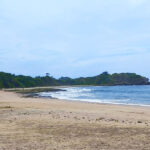 Explore the contrasting charms of Nosara and Santa Teresa with our comprehensive guide. From serene beaches to vibrant nightlife, discover which Costa Rican gem aligns with your travel dreams. Brought to you by Gypsy Cab Nosara.
Explore the contrasting charms of Nosara and Santa Teresa with our comprehensive guide. From serene beaches to vibrant nightlife, discover which Costa Rican gem aligns with your travel dreams. Brought to you by Gypsy Cab Nosara.
- Nosara vs. Jaco: Which Costa Rican Beach Town is Right for You?
- Discover the Best Nosara Shuttle Service for Your Trip
- Gypsy Cab Nosara Shuttle Service to Bodhi Tree Yoga Resort: Comprehensive Hotel Review
- Comparing Playa Negra Vs Nosara: The Ultimate Guide to Costa Rica’s Hidden Gems
- Experience Luxury with Private Transport in Nosara
